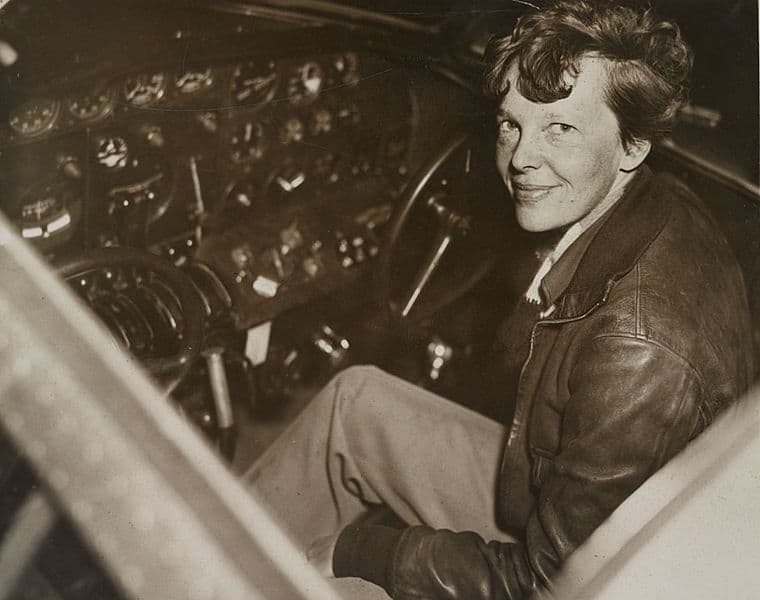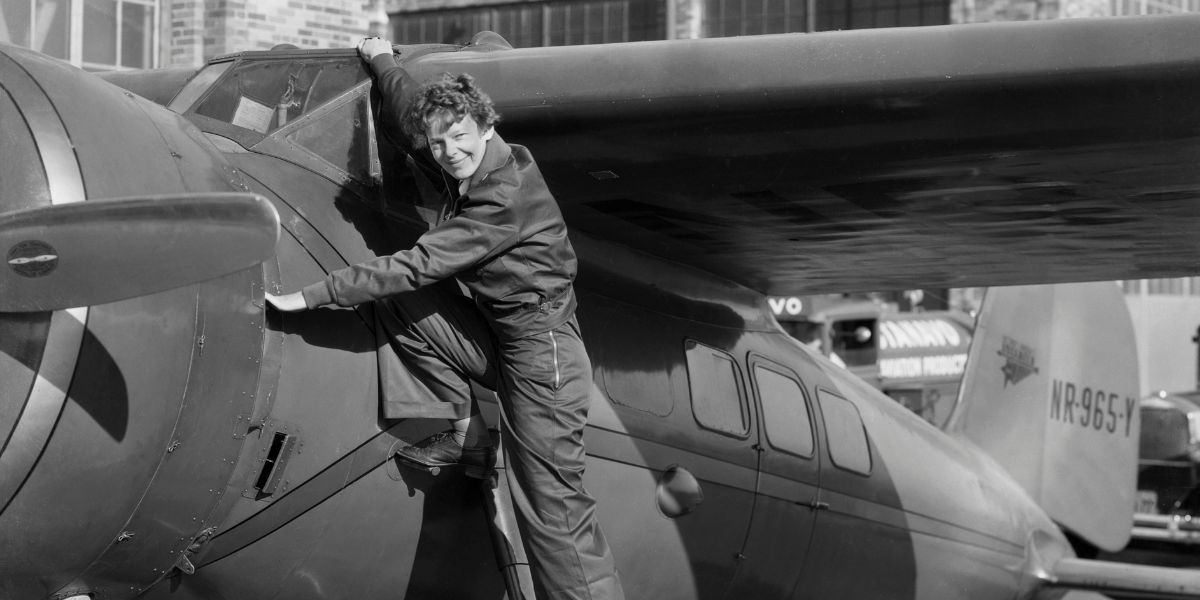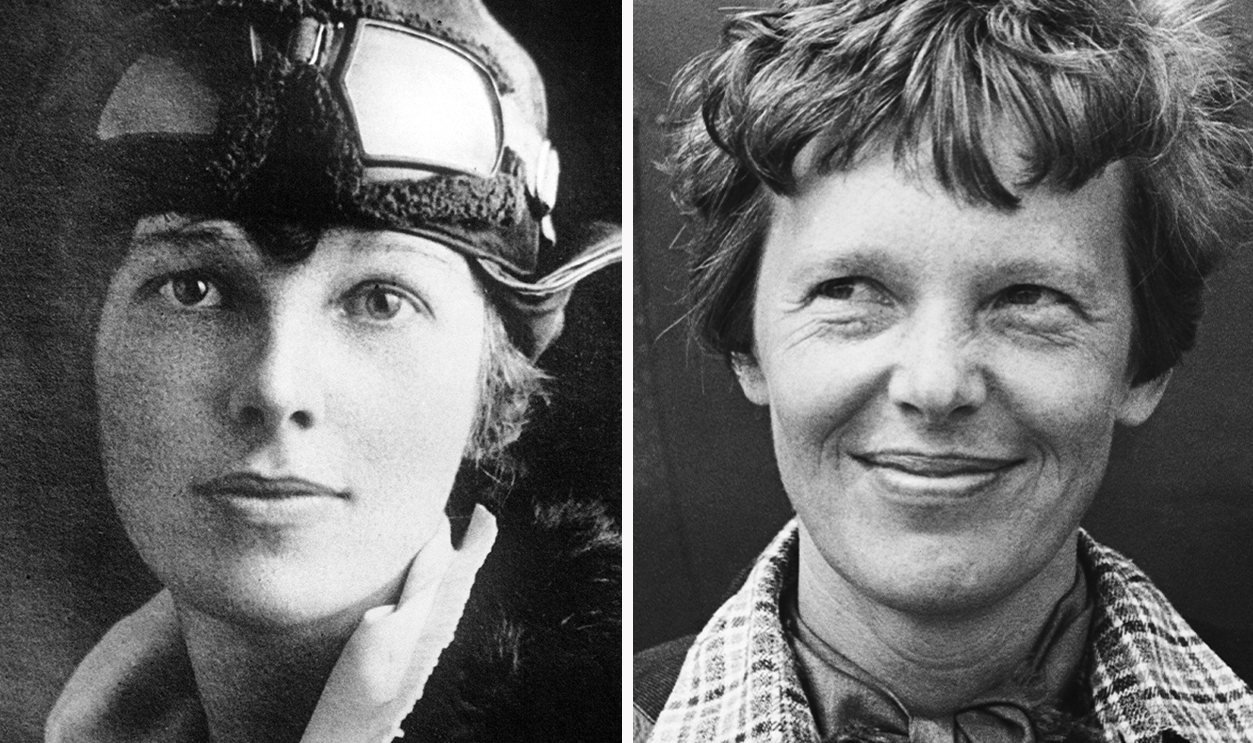The Shocking Truth About Amelia Earhart’s Disappearance Revealed by AI: What Really Happened Will Leave You Speechless!

Amelia Earhart was more than just a pilot; she was a trailblazer, a symbol of what women could achieve in a time when societal expectations dictated otherwise.
Born in 1897, she grew up in a world that sought to keep women grounded, but Amelia had other plans.
She was captivated by the thrill of flight and the promise of freedom that came with it.
In 1928, she became the first woman to cross the Atlantic as a passenger, and just four years later, she piloted her own solo transatlantic flight, defying the odds and capturing the world’s attention.
As the Great Depression gripped America, she became a beacon of hope and inspiration, advocating for women in aviation and championing the cause of equality.
By 1937, Amelia was preparing for her most ambitious challenge yet: a flight around the world along the equator, the longest possible route.
Her aircraft, the Lockheed Electra 10E, was a marvel of engineering, equipped with extra fuel tanks and advanced navigation equipment.
Alongside her was Fred Noonan, a skilled navigator who had charted courses for Pan-American Airways across the Pacific.
Together, they were poised to push the limits of aviation technology and human endurance, not just for personal glory, but to solidify America’s status as a leader in aviation during a time of rising global tensions.
The journey began in March 1937, but a runway accident in Hawaii forced Amelia to regroup and repair her aircraft.
Undeterred, she launched again on June 1st from Miami, flying eastward across South America, Africa, India, and Southeast Asia.
By late June, they had crossed 22,000 miles, with only the perilous Pacific leg remaining.

Their final destination before returning to the continental U.S. was Howland Island, a tiny speck in the vast ocean, barely two miles long.
Navigating to it was akin to finding a grain of sand in an endless sea, but Amelia was confident in her abilities.
On July 2nd, she took off from Lae, New Guinea, for the critical 2,500-mile flight to Howland Island.
The world held its breath, but Amelia would never arrive.
Her Lockheed Electra vanished into the Pacific sky, and what followed was one of history’s most extensive and agonizing searches.
The morning of July 2nd was tense; at 10:00 a.m. local time, Amelia’s Electra roared into the sky, engines humming and fuel tanks full.
Hours into the flight, her transmissions crackled over the airwaves, revealing her growing desperation.
“We must be on you, but cannot see you.
Fuel is running low.
We are circling, but cannot hear you.”
The U.S.Coast Guard cutter Itasca was stationed at Howland, ready to guide her in, but Amelia’s radio receiver may have malfunctioned.
She could broadcast her distress, but she could not hear their responses.
At 8:43 a.m., she sent her final message: “We are on the line 157 337.
We are running north and south.”
And then—silence.

No explosion, no smoke, just an eerie emptiness.
Panic spread quickly, and the U.S.
Navy and Coast Guard launched the largest air-sea search in history up to that point.
Thousands of men scoured the Pacific, deploying battleships, aircraft carriers, and patrol planes, but they found nothing—no wreckage, no oil slick, no bodies.
Weeks passed, and hope faded.
On July 19th, 1937, the official search was called off, and Amelia Earhart and Fred Noonan were declared lost at sea.
Yet the absence of evidence was unbearable.
How could an entire aircraft and its crew vanish without a trace? Theories proliferated.
Some insisted the Electra simply crashed into the ocean and sank to unfathomable depths.
Others believed Amelia had reached Nikumaroro, a deserted coral atoll, and died as a castaway.
More radical ideas whispered of Japanese capture, espionage, or even secret survival under a new identity.
For decades, these stories circulated, each compelling yet unproven.
But now, with the advent of artificial intelligence, researchers have fed every scrap of data on Earhart’s disappearance into advanced algorithms—flight logs, weather records, radio transmissions, navigation maps,
and U.S.
Navy search reports.
The AI didn’t just analyze the data; it reconstructed her final flight second by second.
The first revelation was about navigation drift.
While Noonan was an expert, the skies that day were unforgiving.

The AI model simulated crosswinds and cloud cover along the route, demonstrating how the Electra was pushed off course by unseen headwinds.
Each hour they drifted further east, and by dawn, their fuel was dwindling.
The AI calculated their endurance with startling precision: 20 hours and 13 minutes.
At that limit, the plane had to either land or fall.
Next came the radio analysis.
Engineers had long puzzled over Amelia’s final words.
The AI reconstructed the Electra’s transmitter and modeled the signal’s reach.
It confirmed that Amelia was indeed close—within 100 miles of Howland—but slightly off course.
The AI cross-referenced Navy records to chart the probable crash zone, predicting it was not near Howland, but deeper into the Pacific where searchers never looked.
This was a groundbreaking revelation.
But the AI’s findings didn’t stop there.
Sonar mapping of historical ocean surveys revealed anomalies on the seafloor, 17,000 feet below, that bore an eerie resemblance to aircraft debris—metallic echoes suggesting a twin-engine fuselage, wings, and
landing gear.
While this was not definitive proof, it was hauntingly suggestive of what might lie beneath the waves.
The AI also unearthed contradictions surrounding the bones discovered on Nikumaroro Island in 1940.
British officials dismissed them as male, but modern forensic reanalysis suggested otherwise.
The proportions matched a woman of Amelia’s size.

The AI compared skeletal measurements with thousands of profiles, concluding a high likelihood that they belonged to Earhart.
Unfortunately, those bones were lost, leaving only records behind.
Even stranger, AI image recognition flagged archival photos from Japanese-held Saipan.
In the background of a 1937 harbor scene, a blurry figure appeared—a short-haired woman, hands bound, beside a man resembling Fred Noonan.
Some researchers claimed it was Amelia, while others insisted it was mere coincidence.
The AI couldn’t declare certainty, but it raised chilling possibilities.
One model pointed firmly to an ocean crash, another leaned toward Nikumaroro survival, and a third whispered of capture.
The mystery was not simply solved; it was splintered.
Amelia Earhart likely did not vanish instantly; she may have endured days, weeks, or even months of desperate struggle.
If the Saipan photographs were authentic, her fate could have been worse than anyone dared imagine.
The technology of today points to grim possibilities, yet the truth has remained buried for decades.
The official narrative of “lost at sea” was convenient; it absolved governments of failure.
But archival whispers suggest a more complex reality.
In 1937, America and Japan were on a collision course, and if Earhart had been captured after straying into Japanese territory, admitting it could have provoked war years earlier than Pearl Harbor.
Franklin Roosevelt’s administration may have chosen silence over escalation, leading to altered search records, missing logs, and classified files that weren’t declassified until the 1980s—some sections still
redacted.
Why hide anything if Amelia’s Electra was at the bottom of the Pacific? Conspiracy theories flourished.
Some argued she was on a secret spy mission photographing Japanese bases, while others claimed she was taken prisoner and her execution covered up.
More cautiously, historians suggest simple embarrassment; the U.S.

Navy had spent millions searching and failed.
Better to preserve the legend than admit incompetence.
Whatever the motive, one thing is clear: the mystery endured because it served interests.
Amelia’s legend as a lost hero inspired generations, while the messy truth was buried in bureaucracy.
Today, AI can cut through that fog, but even now, officials hesitate.
Expeditions claiming promising sonar images often run out of funding, photos hinting at wreckage are dismissed, and documents remain sealed.
This leaves an unsettling question: if AI has narrowed down the truth, why are we still being kept in the dark? Perhaps because Amelia Earhart’s legacy is more powerful as an eternal question mark than as a tragic
certainty.
The silence suggests something else—that what really happened was far worse than we want to admit.
The AI’s conclusions draw a picture both clearer and crueler than legend.
Amelia did not simply vanish; she was abandoned by the world that celebrated her.
This abandonment, whether deliberate or accidental, may be the cruelest part of her story.
The Pacific still keeps its secrets, and Amelia Earhart’s last flight remains not only a mystery of navigation but a haunting reflection of human failure.
As we look back with clearer tools than ever before, the uncomfortable truth emerges.
Did Amelia Earhart vanish into the ocean, her Electra buried beneath the waves? Did she survive on a deserted island, abandoned by history? Or was she silenced by forces that never wanted her story told? Let us
know your thoughts in the comments.
And when you’re ready for another case where modern technology collides with humanity’s darkest mysteries, watch the next video on your screen.
Because Amelia Earhart’s truth is only one secret the past is still trying to keep.
The most haunting lesson from Amelia’s story is not found in sonar scans or AI algorithms, but in what her disappearance says about us.
Human history is full of mysteries that we allow to remain unsolved, not because answers are impossible, but because the answers might demand accountability.
Amelia’s vanishing was not simply the tragedy of a plane lost in the vast Pacific; it was the tragedy of signals ignored, of governments choosing politics over truth, of a woman whose life became a myth more useful
than her reality.
Artificial intelligence can reconstruct her path, simulate her final hours, and even highlight the likely place where her Electra rests, but it cannot reconstruct the willpower that was absent in 1937—the urgency to
save her when she was still calling for help.
That failure belongs not to machines, but to us.
